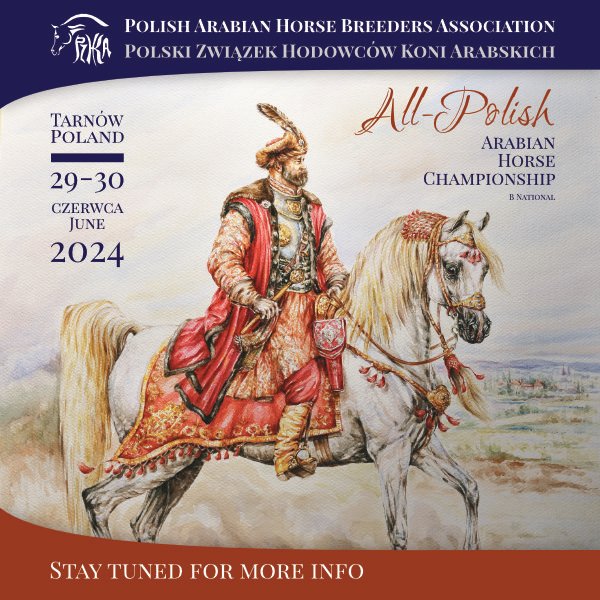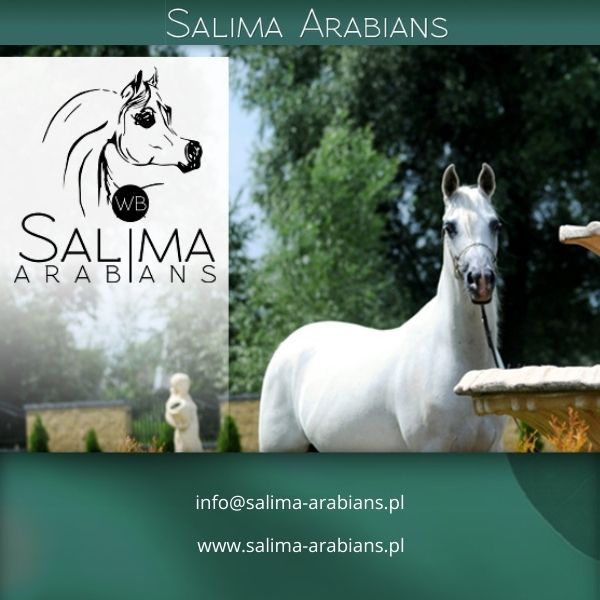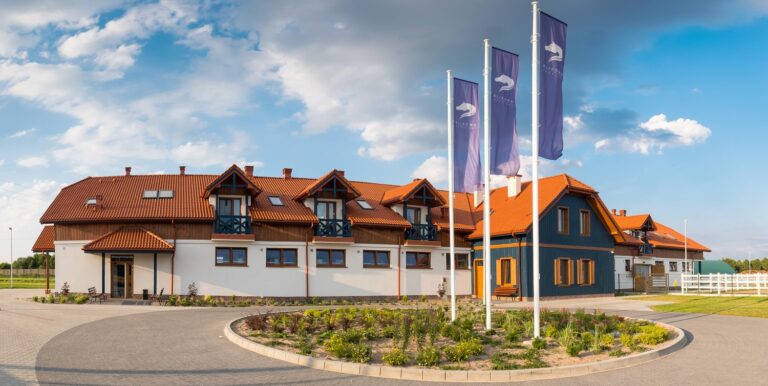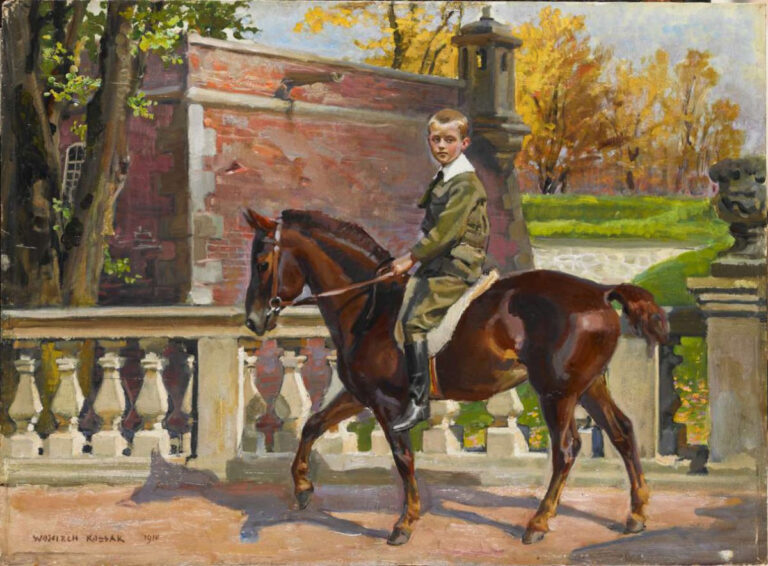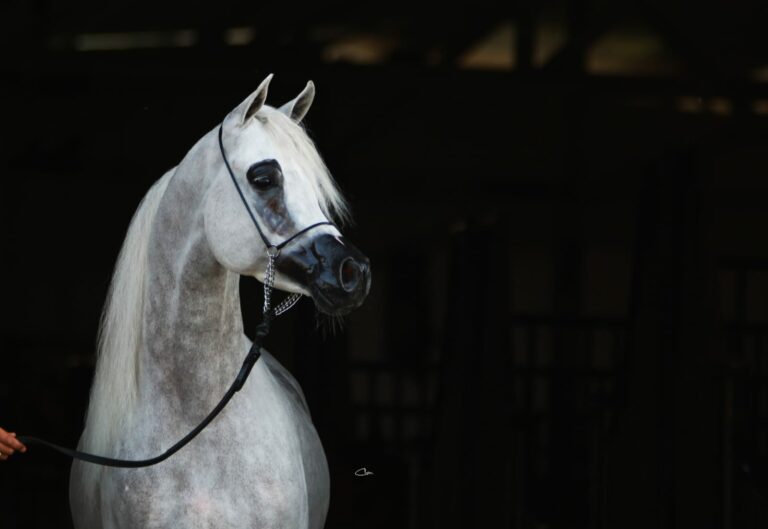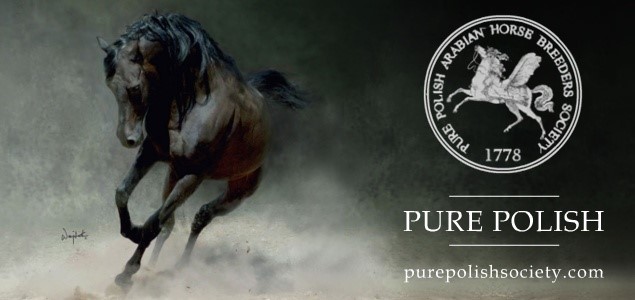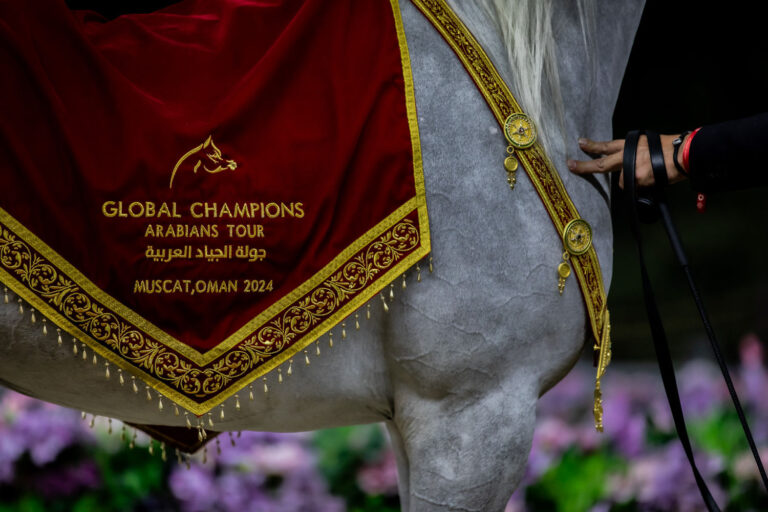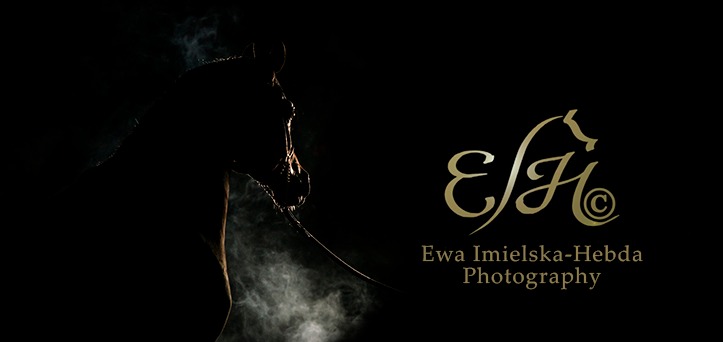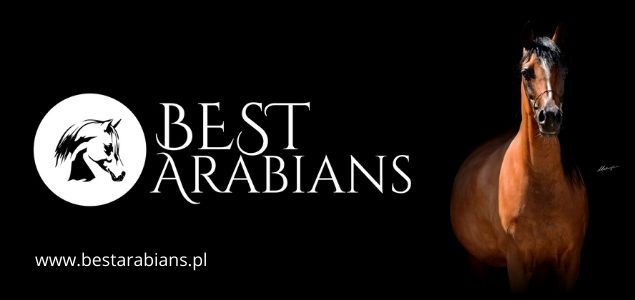Białka Arabian State Stud 1981-2021
The years 1980 – 1981 – difficult beginnings in the shadow of great history
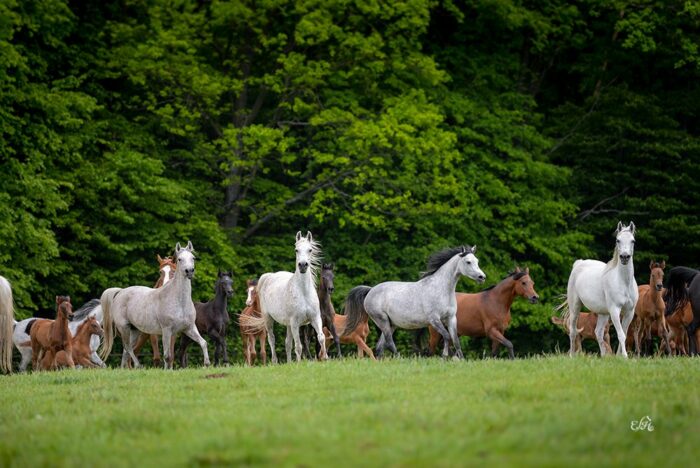
Located in the vicinity of Krasnystaw, Białka has been known since 1930 as the State Stallion Stud. Till the end of the eighties, Białka Stallion Stud served as a breeding centre for Anglo arabian half-breed horses by maintaining a herd of stallions kept there to satisfy the needs of that race. Simultaneously, from 1981 the Purebred Arabian State Stud has become an inherent symbol of Białka. Great interest in the Polish Arabian horses among foreign buyers as well as high prices obtained for these horses are frequently presented as the only reason for establishing in Białka a fourth Arabian State Stud. And yet, the truth is far more complex, as there were other important factors that triggered the decision to establish in Białka another Arabian State Stud, side by side with the existing State Stallion Stud. On the one hand, very favourable climate conditions conducive to breeding horses as well as rich pastures proved as very important factors speaking for Białka. On the other hand, the second half of the seventies witnessed a steadily declining demand for stallions servicing the area, which prompted a considerable decrease in the herd of stallions kept there. By the end of the seventies, a number of buildings were put out of use in Białka – stable 3 was vacant-and the Stallion Stud was facing a very difficult economic situation. Therefore, the decision was made to create in Białka an Arabian stud in order to exploit fully the rich feed base, buildings and a very well trained, specialised work force available there. The people behind that decision were Adam Sosnowski, then Manager at the Horse Breeding Division and his collaborators Izabela Zawadzka, Jerzy Budny and Kazimierz Guziuk, at that time the director of Białka State Stallion Stud. That decision also proved very advantageous to the already existing Arabian State Studs in Janów, Michałów and Kurozwęki, as these could in this way dispose of their breeding surplus caused by a diminishing demand for Arabian horses noted then on foreign markets. The first 20 Purebred Arabian mares and one foal arrived to Białka State Stallion Stud in November 1981, constituting the founding herd of the fourth State Arabian Stud in Poland. Next year, the first Purebred Arabian foals were born in Białka, hence, the year 1982 is sometimes considered as the foundation year of Białka Arabian State Stud. Especially worth underlining here is the important role played by Manager Adam Sosnowski, who passed to the history of the Polish horse breeding thanks to his great merits during the war as well during the post war reconstruction and reorganization of the Polish horse breeding. Born in Podole and raised among horses under the eye of his father, Adam Nałęcz-Sosnowski was especially fond of the Arabian horses. His father, Kalikst Sosnowski occupied the post of the Director of State Stallion Stud in Białka till his tragic death on September 12th, 1939. Numerous war merits of Adam Sosnowski encompassed, among other things, recovery and identification of Ofirka, a mare of great merit to the Polish breeding, as well as recovery of many horses dispersed from private breeding in the south of Poland. In 1956 Adam Sosnowski was entrusted the task of choosing Arabian mares out of the group of horses that arrived to Wrocław from the Tiersk Stud. Four mares were bought then: Potencja, Pikirowka, Pienoczka and Piewica. The most valuable of them proved Piewica and Pienoczka, whose descendant is the distinguished sire Probat. The other one, Piewica, was the daughter of Włodarka, robbed by Russians from the Janów Stud. Piewica not only enabled the reintroduction to Poland of the lost dam family of Szemrajówka, d.b. 1810 originating from Biała Cerkiew, but she also founded in Janów and subsequently in Białka the most famous Polish dam line, often called the „P” family. Apart from the famous Pianissima in Janów, the „P” family gave such Białka stars as Perforacja, Pesal, Perfirka and Perfinka. Adam Sosnowski took up in 1972 the position of Manager at the Horse Breeding Division. He was personally in charge of the State breeding of Arabian horses, as Adam Sosnowski paid special attention to the breeding of that horse race. His decisions referring both to breeding and organizational issues were of a visionary character, like for example importing to Poland the stallion Probat in order to reintroduce in Poland the lost sire family of Kuhailan Afas db. His decision to establish an Arabian Stud in Białka revealed not only his sagacity, but also his ability to foresee correctly possible changes in the business cycle. Adam Sosnowski was a proponent of the idea to divide the basic herd of the Purebred Arabian horses in order to use different envioronmental conditions on smaller populations. From the present perspective it can clearly be seen that Białka avoided the fate of other Stallion Studs put to liquidation during the ninities only thanks to the fact that it possessed an Arabian Stud. That Arabian State Stud gained the status of a strategic state-owned limited liability company, which enabled the Stud with the valuable facility of Białka to survive for another 40 years, hoping for more.
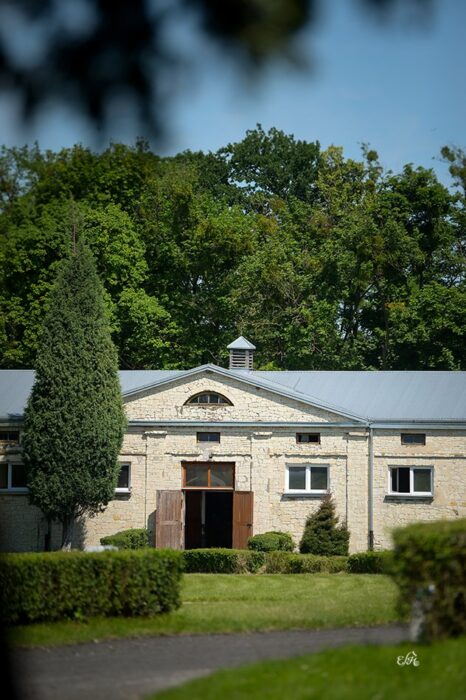
In order to get the feeling of the reality accompanying the initial years of Białka Arabian State Stud, one has to remember that the eighties in Poland witnessed the birth of Solidarity and other great socio-political movements in 1981. The tragic decade that followed was marked by the state of war, economic crisis and widespread poverty. The situation changed only in 1989 with the partially free elections and the withdrawal from Poland of Soviet troops in 1993.
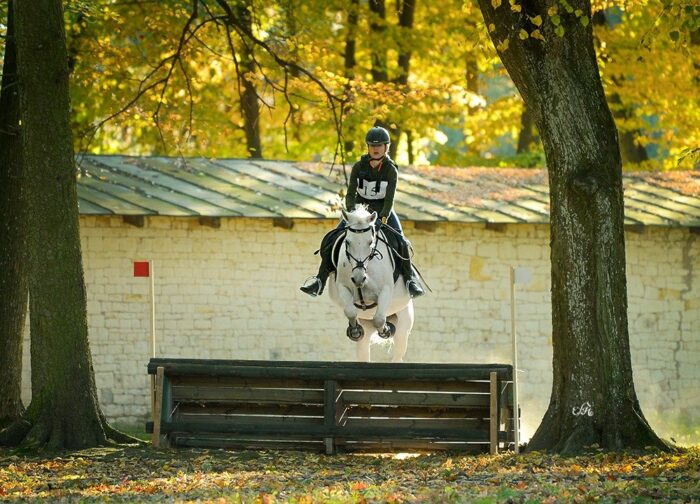
Breeding herd – ups and downs
Białka Arabian State Stud started its proper breeding activity in 1982 based on the breeding material received from the already existing State Arabian State Studs. A total of 29 stud mares arrived to Białka, of which most came from Michałów – 12, from Janów Podlaski – 10 and least from Kurozwęki – 7. These stud mares represented 10 dam families present in the Polish Breeding Program after 1946: Ukrainka, Gazella, Sahara, Bent-El Arab, Milordka, Szamrajówka, Szweykowska, Scherife, Rodania and Mlecha and 5 sire families founded by original Arab stallions: Kuhailan Haifi db. – 16 horses, Ibrahim db. – 5, Ilderim db. – 4, Bairactar db. – 3 and Saklawi I – 1. Throughout the years, the pedigree structure of the breeding herd in Białka has undergone some modifications. Apart from selection, the shape of that breeding herd was influenced by an influx of mares from Kurozwęki Stud privatised in 1998 and by the purchase of several mares from Janów Podlaski in 2018. Currently, as revealed by the 2021 Białka autumn breeding survey, 57 mares consitute the herd of mares, representing 9 dam families, of which: Szemrajówka – 12 mares, Gazella – 10 mares, Mlecha – 5 mares., Sahara – 6 mares, Wołoszka – 6 mares, Milordka – 9 mares, Scherife – 5 mares, Bent-El-Arab – 3 mares and Rodania – 1 mare.
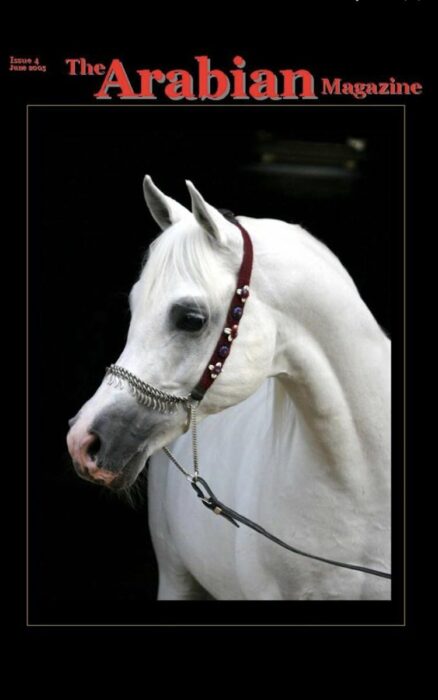
27 sires were used in Białka during the years 1982-2000. The great diversity characterizing the herd of stud mares required from the breeders individual selection, resulting in a considerable number of sires used. And yet, despite such broad use of sires, Białka was initially unable to obtain distinguishing offspring. This was mainly due to the fact that Białka had no access to the best sires of the time that were available in Janów and Michałów. For many years, Białka had to use sires of lesser quality, or sires not fitting the other studs, or else sires not proven hitherto in breeding. However, consistent breeding effort based upon sharp and strictly targeted selection finally brought results. The nineties mark a series of successes achieved by horses from Białka on racetracks, and eventually also on show rings. The year 1991 witnessed the birth in Białka of a stallion that made Białka widely recognizable. That stallion also proved to be an extremely valuable sire, the father of many valuable mares and a continuator in the Polish breeding of the sire family Ilderim db. The stallion in question was Pesal (Partner-Perforacja/Ernal) born in 1991. Pesal was recognizable from afar thanks to his characteristic beauty. That beauty also ensured him great success. Pesal distinguished himself by his decisive Saklavian type. Additionally, he was a very correctly built stallion, with an exquisite Arabian bouquet and a propensity to put on fat, a feature so characteristic for his family. He early acquired a milky white shade of his grey coat, which made his big, black eyes stand out expressively against that fair background. A short head with a deep jaw, beautifully curved neck and outstanding movement along with a triuphantly waving tail and characteristically flowing mane – these were the distinctive features of Pesal. At the Michałów Junior Spring Show in 1993, the two-year-old Pesal not only won his class, but he also became the Polish Junior Colt Champion as the first ever representative of Białka Stud. The sophisticated beauty of Pesal was combined with a friendly and gentle character. He was ascribed excessive delicacy, or even „femininity”, but Pesal was running on racetrack for two seasons and he won two races. Upon passing his bravery trial, Pesal returned to the show ring in order to become in 1996 the Polish National Senior Stallion Silver Champion at Janów Podlaski National Arabian Horse Show and a Silver Champion at the All Nations Cup in Aachen. In the following year 1997 Pesal became the Polish National Gold Champion of Senior Stallions at Janów Podlaski National Arabian Horse Show, winning also the title Best in Show. Incorporated into breeding, Pesal was used in Michałów and Agricola Farm, where he left a number of valuable mares: among these in Michałów Złota Orda 1991 (Pesal-Zagrobla/Monogramm), the granddam of Ptolemeusz, the Silver Junior Champion Stallion at the European Arabian Horse Championships. Another mare, Bagatela 2000 (Pesal-Braminka/Elf) is the mother of a titled mare Bajaderka. Pesal is primarily the father of stallion Girlan-Bej 2002 (Pesal-Gracja-Bis/Monogramm) bred by PP Bogajewicz. Girlan-Bej is the Polish National Junior Gold Champion at the Janów Podlaski National Arabian Horse Show as well as a World Silver Champion in the same cathegory at the World Championships of the Arabian Horses. In total, Pesal left 124 of his offspring, to whom he passed beauty, good character and grey coat. In that respect he was homozygotic and foals by Pesal whitened already with mothers. In 2003 Pesal was sold to the Neatherlands, winning the Championships of that country. However, in 2005 Pesal returned in lease to Poland, where he was used at Janów Podlaski Stud. Leaping forward, Pesal was given Palmeta, the best Janów mare boasting exceptional beauty. Out of that combination was born the continuator of the family, the grey Palatino 2006 (Pesal-Palmeta/Ecaho). Since 1996 Pesal was also used in his maternal stud where he left a lasting trace. Yet, it is only in Janów that he managed to prolong his family. Currently, there are no daughters by Pesal in Białka, but the group of his granddaughters constitute one of the strong pillars of the Arabian horse breeding in Białka. Such mares as Estufa 2009, Cytera 2009, Hermia 2008 or Haftka 2008 are valuable breeding mares with a pure Polish pedigree.
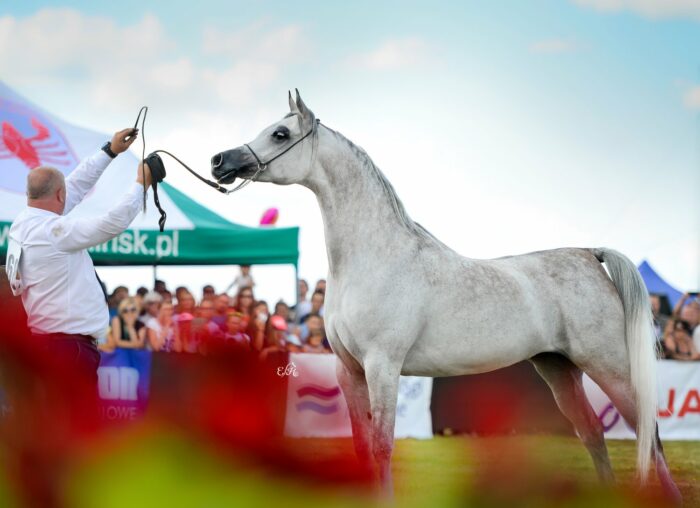
Among sires used in Białka noted for giving exceptional offspring, one has to mention the stallion Gazal Al Shaqab. He fathered such mares as Perfirka (out of Perforacja by Ernal), Perolia (out of Pereira by Eldon) and Fabryszka (out of Fula by Partner) and the stallion Ekstern, father of the following mares: Ekina 2004 (out of Eklera by Ecaho), Cirilla 2006 (out of Cirka by Borek), Calatea 2008 (out of Calineczka by Metropolis N.A.), Cella 2008 (out of Celina by Metropolis N.A.), Frymuszka 2008 (out of Fabryszka by Gazal Al Shaqab) or the stallion Celsjusz 2004 (out of Carina by Pesal). Another son by Ekstern, the Michałów bred stallion Esparto (Ekstern-Espozycja/Eukaliptus) also left in Białka a number of excellent mares, to mention the distinguishing Egema (out of Egira by Emigrant) as well as Perfinka (out of Perfirka by Gazal Al Shaqab), the brightest star born in Białka so far. She started her show career in 2012 by winning the class of yearling fillies at the Junior Arabian Horse Show in Białka. The same year Perfinka was awarded the Top Ten title during the World Championships of the Arabian Horses in Paris. Subsequent years marking her career are: 2013 with the titles of World Junior Silver Champion Mare, European Junior Silver Champion Mare, Polish National Junior Silver Champion Mare, All Nations Cup Junior Champion Mare in Aachen, 2014 PSAIHF Junior Champion Mare in Saudi Arabia, April 2019 Las Vegas Arabian Breeders World Cup Senior Gold Champion Mare, US National Senior Gold Champion Mare and in 2020 Scottsdale Arabian Horse Show Senior Gold Champion Mare, giving Perfinka in all the American Triple Crown. In 2020 Perfinka was sold during the Pride of Poland auction for a record sum of EUR 1 200 000,00, which became a beautiful culmination of her show career. Perfinka left in Białka one daughter Platinia 2018 (Equator-Perfinka/Esparto), who is now facing the diffcult task of fulfilling the high breeding expectations elevated by the standards of her famous mother.
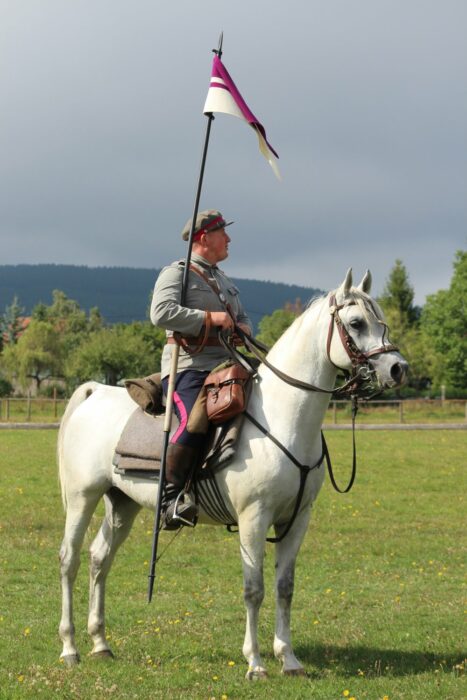
Białka specialty – Arabian race horses, endurance horses, sport horses and walking horses
Over the years Białka has earned the reputation of being an Arabian Stud offering for sale good utility horses. This was favoured by the choice of sires as well as the breeding methods used. Great beauty and the breeding methods employed enabled Arabian horses from Białka to compete successfully with Arabians from Janów stud and Michałów stud. That situation encompassed not only the correct build and great beauty, but primarily very high bravery on racetrack. Until the the first years of the 21st century, the Arabian horses from Białka were subjected to bravery trials on racetrack, and around 80 percent of horses completed that training sucessfully. A pedigree analysis of horses running on racetrack clearly shows that the greatest bravery is noted among representatives of the dam line Scherife or.ar. 1902. Compared with the representatives of other lines, representatives of the dam line Scherife or.ar.1902 show the highest average value of the racing success rate (RSS=3,18) as well as the longest period of racing use (average 2,2 seasons) with a simultaneous highest number of starts in races (average 15 starts) and the highest number of victories (average 4,6 victories per mare). Considering the origin on the sire side, the bravest horses turned out to be the representatives of the sire family Krzyżyk or.ar. 1876 with a simultaneous racing success rate 2,69, average 14 starts during a 1,75 years long racing career topped with 3 victories. Throughout their 40 years long history, horses from Białka twice won the Derby Award (Dziewierz and Ostragon), twice the Oaks (Al Adha, Aryjka), the Europe Trophy (Esej) and the Białka Trophy (Abisynia). Derby 1993 witnessed horses from Białka taking the first four places: Dziewierz, El Amor, Osjan and Al Adha. Unfortunately, from the beginning of the 21st century horses from Białka Arabian Stud are no longer put to bravery trials on racetrack, which had a negative impact upon the development of the stud and resulted in falling revenue from the sale of utility horses. Presently, only 3 mares born in 2018 are put to training on racetrack, which amounts to less than 10 percent of horses born in Białka that year.
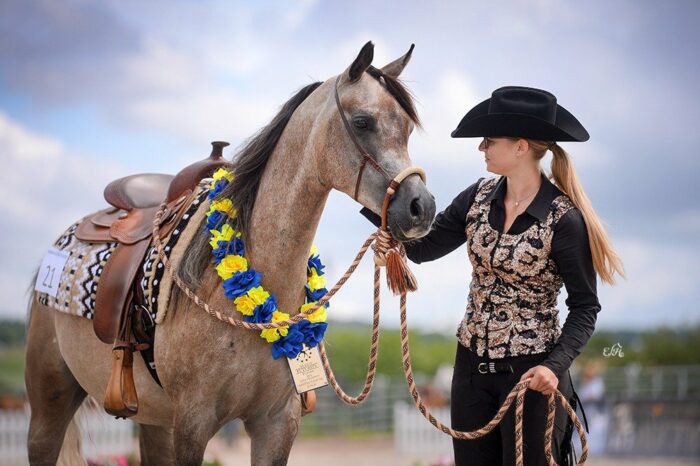
Due to their exceptional racial qualities, the Arabian horses are very well adapted to participate in long distance endurance riding competitions, where they prove far superior to the representatives of other horse races. Arabian horses from Białka have been taking part in such competitions from the very beginning, winning recognition and awards. Among the experts of long distance endurance riding competitions, such horses as Alabar 1984 (Haracz-Albania/Gwarny), Albat 1983 (Probat-Alkaba/Celebes), or Drakkar 1987 (Alkazar-Darowizna/Partner) are considered to be pioneers of that discipline in Poland.
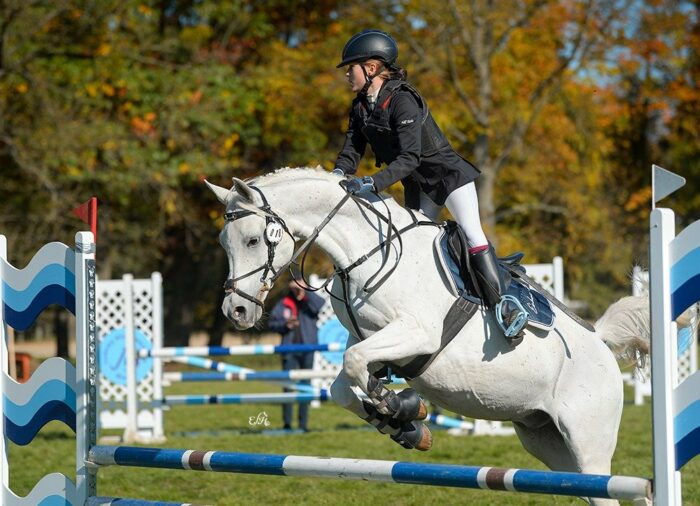
However, these undoubted sport and racing successes remain history. This is mainly due to the fact that during the past decade, Białka has made her way into a dead-end street by breeding Arabian horses only for show purposes. Pursuing that search for beauty only, horses from Białka were no longer subjected to bravery trials, which resulted in their loss of the bravery feature. It is difficult to tell whether horses from Białka still possess their utility potential without checking that in practice. Sometimes we can find here and there geldings from Białka winning jumping or eventing competitions or acting in reconstruction groups, but these geldings were lucky to fall in good hands. These horses may serve as a confirmation that not all is lost as regards bravery. What about beauty? Well, that is a relative thing.
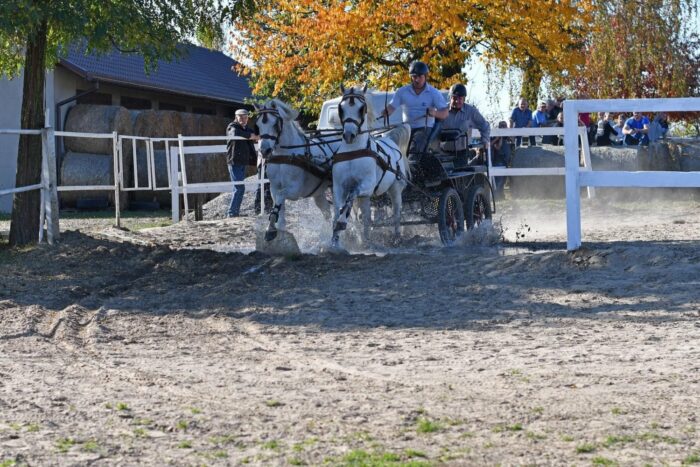
Source materials:
- Breeding Survey 9/2000 „Purebred Arabian Horse Stud in Białka” – M. Budzynski, A. Guziuk, J. Kamieniak, M. Sapuła
- „The Pride of Białka or where Pesal and Perfinka came from?” (2020) Krystyna Chmiel
- „The sire line Ibrahim d.b. 1984 imp. 1900 to Sławuta” – H. Sztuka, M.Grzechnik – purepolishsociety.com
- „Adam Nałęcz-Sosnowski – memory” – Izabella Pawelec-Zawadzka, February 2003 janów.arabians.pl
- Białka Stallion Stud – www.bialka.arabians.pl
- Autumn Breeding Survey, Białka Arabian State Stud, 6 October 2021 – catalogue


